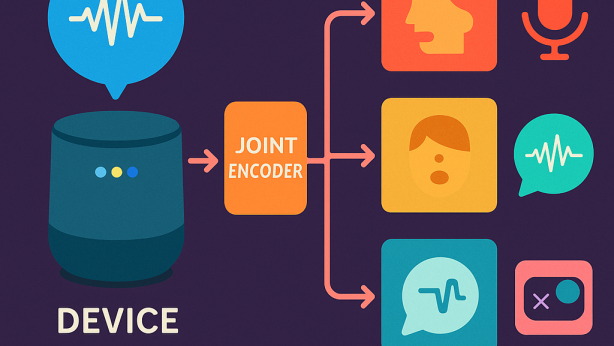Live Syncing Capitalization Table
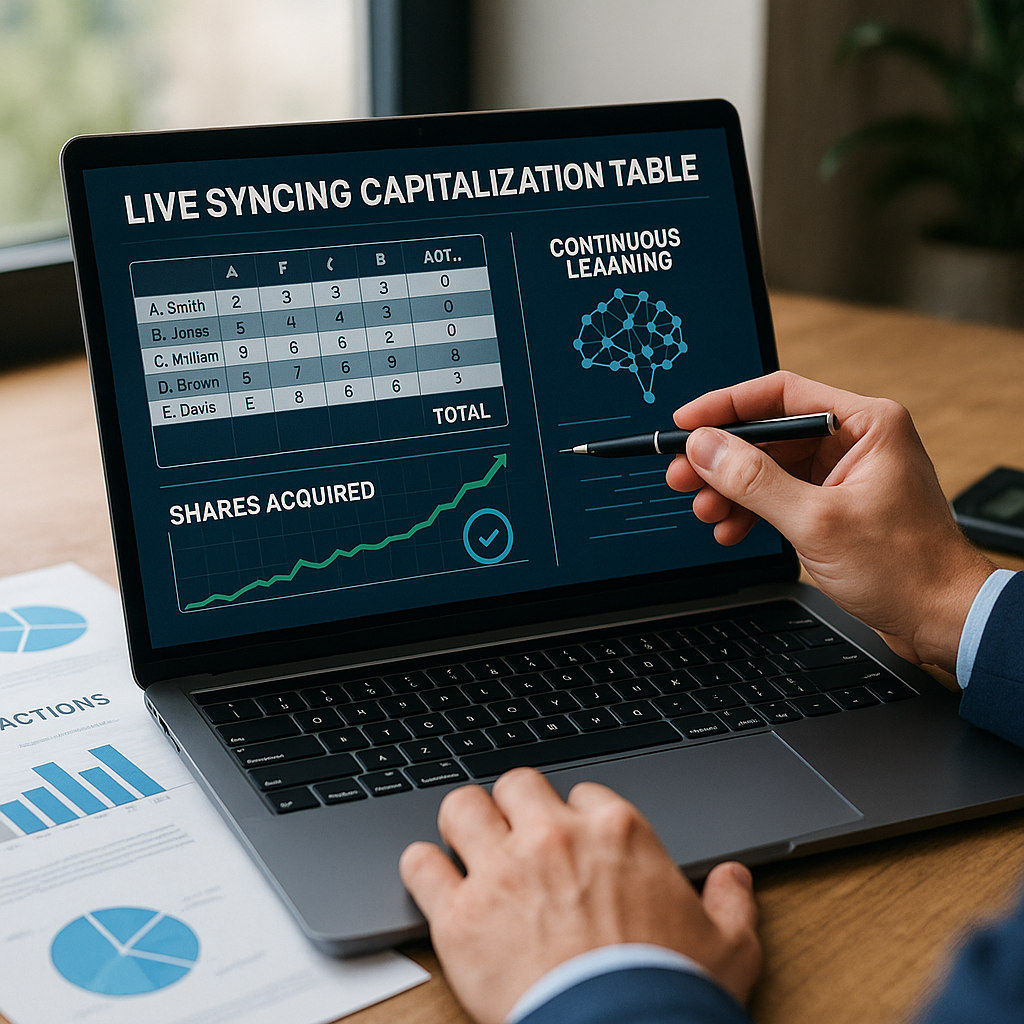
Invented by Patton; Damien, Gratton; Christian
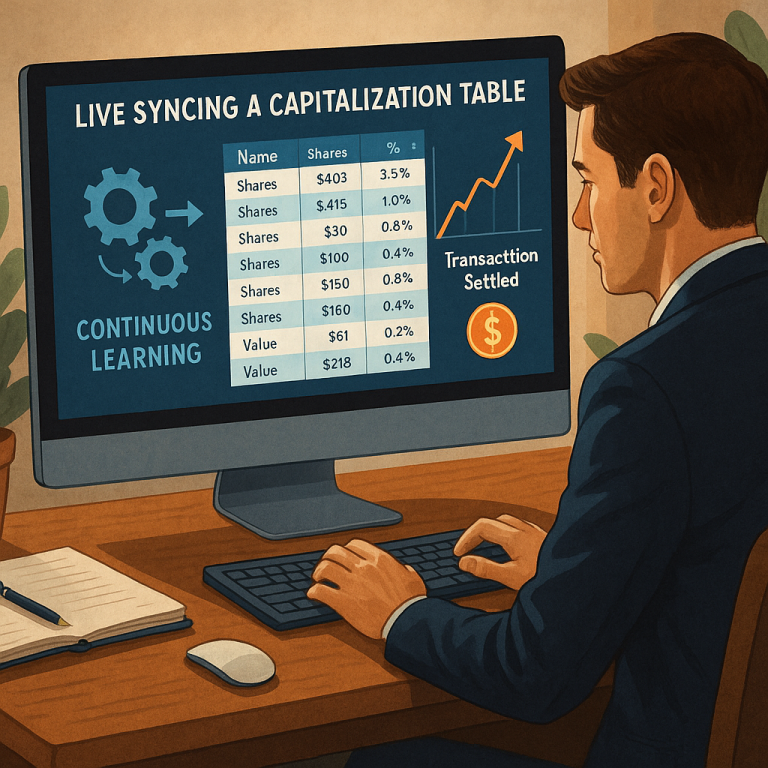
Understanding who owns what is hard. When you have many people or companies owning parts of a building, a business, or any asset, keeping track of it all can turn into a big mess. That’s where a new invention comes in—one that uses smart computers to build and update these ownership records, called “cap tables,” automatically. In this blog, we’ll walk you through how this technology works, why it’s needed, and what makes it special. This will help you see how it can change the way people buy, sell, and track parts of valuable things, like real estate and more.
Background and Market Context
Let’s start with the basics. When people invest in something together—like an apartment building, a company, or even a piece of art—they need a way to show how much each person owns. This is usually done with a document called a “capitalization table,” or “cap table” for short. A cap table lists every owner and the size of their share. It sounds simple, but as more owners get involved, and as shares change hands, things get tricky fast.
In the past, most cap tables were just spreadsheets. Someone would have to update the sheet every time someone bought or sold a piece of the pie. If they missed a change, or made a mistake, the table would be wrong. This could lead to fights, legal trouble, or big losses. Also, these tables didn’t update automatically when transactions happened. For investments that change hands often, like shares in a hot startup or commercial property, the old way just couldn’t keep up.
Now imagine a world where almost anything can be owned by many people at once. Not just companies, but houses, cars, art, or even racehorses. Technology is making it easier to “fractionalize” these assets—break them into pieces and let many people own a part. This opens up big markets. For example, someone who could never afford a whole building can now own a tiny piece and share in the profits. But it also means the cap table gets even more complicated, with lots of new owners and lots of trades.
With more people owning and trading shares in all kinds of assets, there’s a growing need for a better way to keep track of ownership. Owners want to know exactly what they own, and buyers want to trust that the records are right. Regulators and sellers want to be sure rules are followed, like not letting one person own too much. And everyone wants to avoid fraud or mistakes. This is where the new live syncing cap table system comes in.
The invention described here is built for exactly this world. It is a computer system that makes and updates cap tables in real time, as trades happen. It uses smart computer programs (machine learning) to read messy, unorganized data—like emailed spreadsheets, scanned documents, or even handwritten notes—and builds a neat, official cap table. When someone buys or sells a share, the system updates the table right away. It also makes sure the rules are followed, like stopping trades if someone is about to own too much. The records are stored safely, using blockchain ledgers, so they can’t be changed or faked.
This technology is a game-changer for markets where assets are shared by many, traded often, and need tight control. Real estate, private equity, art, collectibles, and even tickets to events can all use this. With more and more assets going digital and being traded in new ways, tools like this are not just helpful—they are essential.
Scientific Rationale and Prior Art
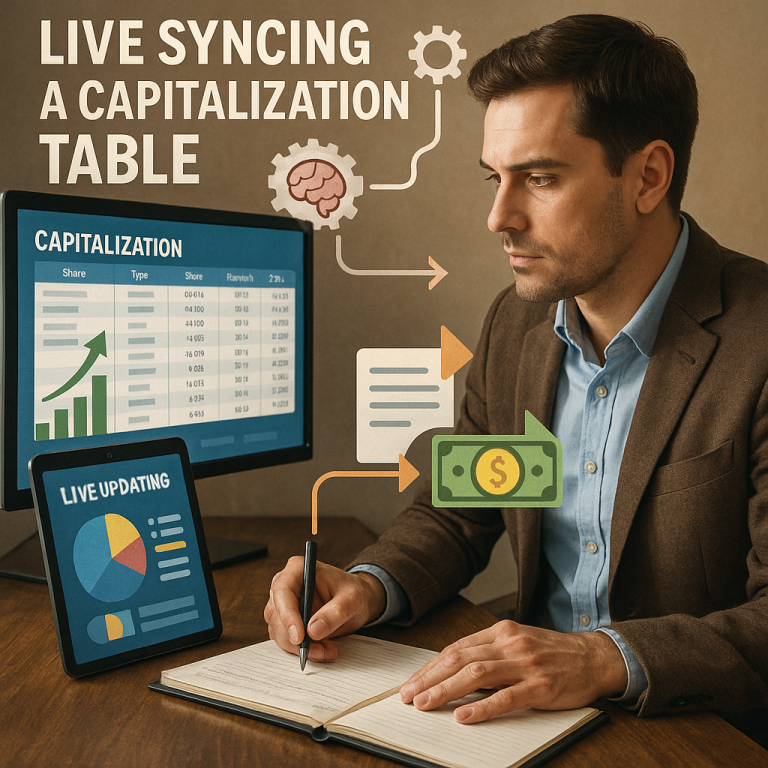
Let’s break down why this invention is needed, and what has come before.
For a long time, the main way to track who owns what was simple: write it down. In small companies or single-owner properties, this worked fine. But as businesses grew, or as more investors wanted in, the job got harder. Cap tables turned into long spreadsheets, with updates made by hand. Mistakes happened—a wrong number, a missed sale, an old address—and these errors could cause big trouble.
Some companies tried to fix this by using better software. There are tools that let startups track their shares, and some property managers use special programs to track investors. But these tools still have limits. They often need someone to type in the changes, and they may not connect directly to the systems where trades happen. If a share is sold, someone still has to update the record afterward. If the sale happens on a different system, syncing the data can lag.
Blockchain brought new ideas to the table. With blockchain, every trade can be recorded in a way that can’t be changed. Some platforms started selling “tokens” that represent shares in assets—like a digital certificate of ownership. Each trade is written to the blockchain, which everyone can check. But there are problems here too. Blockchain records are public, which makes privacy tricky. Not everyone wants their personal info attached to a public record. Also, blockchain records can be hard to read for normal business tasks, like printing a report for a CPA.
Some systems tried to fix the privacy problem by keeping two sets of records: one with all the details (like names and addresses), and another for the blockchain that hides personal info. But syncing these together, and keeping them both up-to-date, is still a challenge. Plus, most systems don’t include smart checks for things like ownership limits or errors in the data.
Another new idea is “smart contracts”—digital agreements that run themselves. These can help automate trades, but they don’t solve the problem of building a clean cap table from messy, unstructured data. If the original ownership info is sitting in emails or scanned PDFs, someone still has to dig it out and clean it up.
What was missing from all these tools is a system that:
— Takes any kind of ownership data, no matter how messy, and turns it into a correct, official record.
— Keeps that record up-to-date automatically, as trades happen.
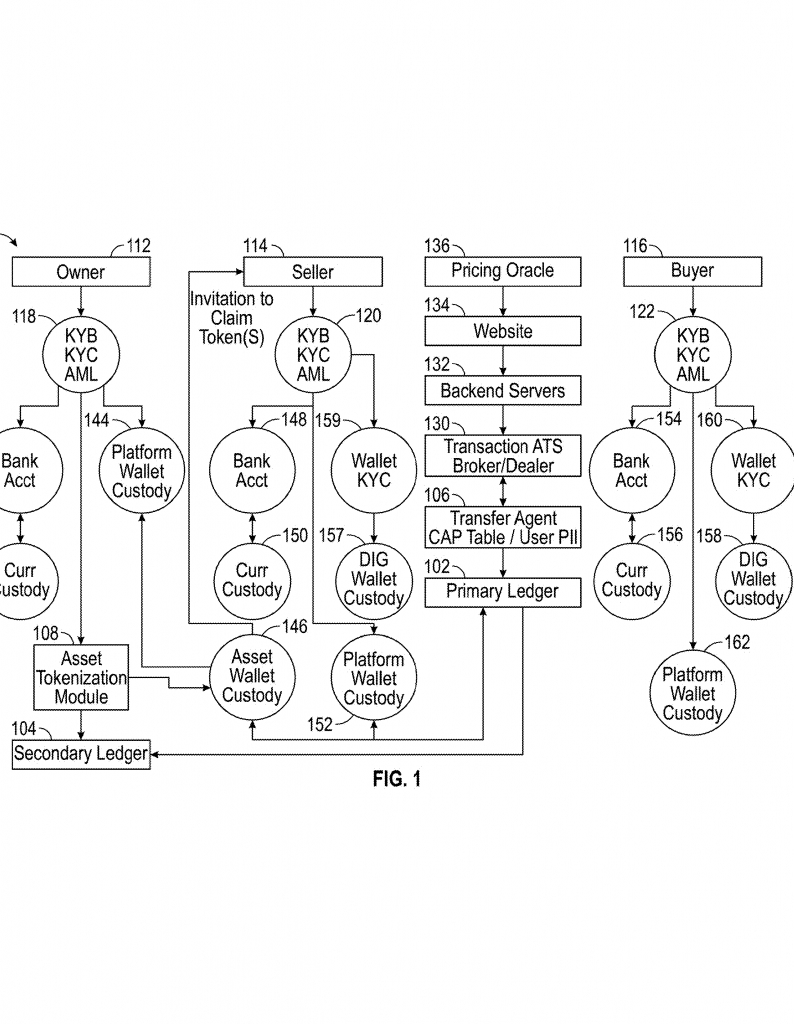
— Checks for errors, double sales, or broken rules (like “no one can own more than 20%”).
— Works for any asset, not just stocks or crypto, and is easy for owners and buyers to use.
— Stores records in a way that is private, permanent, and easy to audit.
The new invention does all these things. It uses machine learning—computers that get better as they see more data—to read and understand messy ownership info. It builds and updates the cap table in real time, as trades happen and as new data comes in. It checks for errors and applies rules. And it keeps two synced ledgers: one private, one public (blockchain), making sure the right info is shared with the right people. This is a leap forward from the old ways.
Invention Description and Key Innovations
Now, let’s talk about how the system works, in plain and simple words.
At its core, this invention is a computer system that builds and keeps your ownership table always up-to-date. It does this by using a smart computer brain (machine learning) to read any kind of ownership info, even if it’s messy or in an odd format. You don’t have to type it all in by hand.
Here’s how it works, step by step:
First, the system takes in the original ownership info from the asset owner. This might be in a spreadsheet, a PDF, or even a handwritten list. The machine learning part reads this data, figures out who owns what, and pulls out important details like names, how much each person owns, tax IDs, and the amount each one invested.
Next, the system checks the data for errors. It makes sure numbers add up. If the ownership percent doesn’t match the money invested, it spots the mistake. If a phone number is missing digits, it flags that too. If something is wrong, the system can tell the owner what needs to be fixed, or even suggest how to fix it.
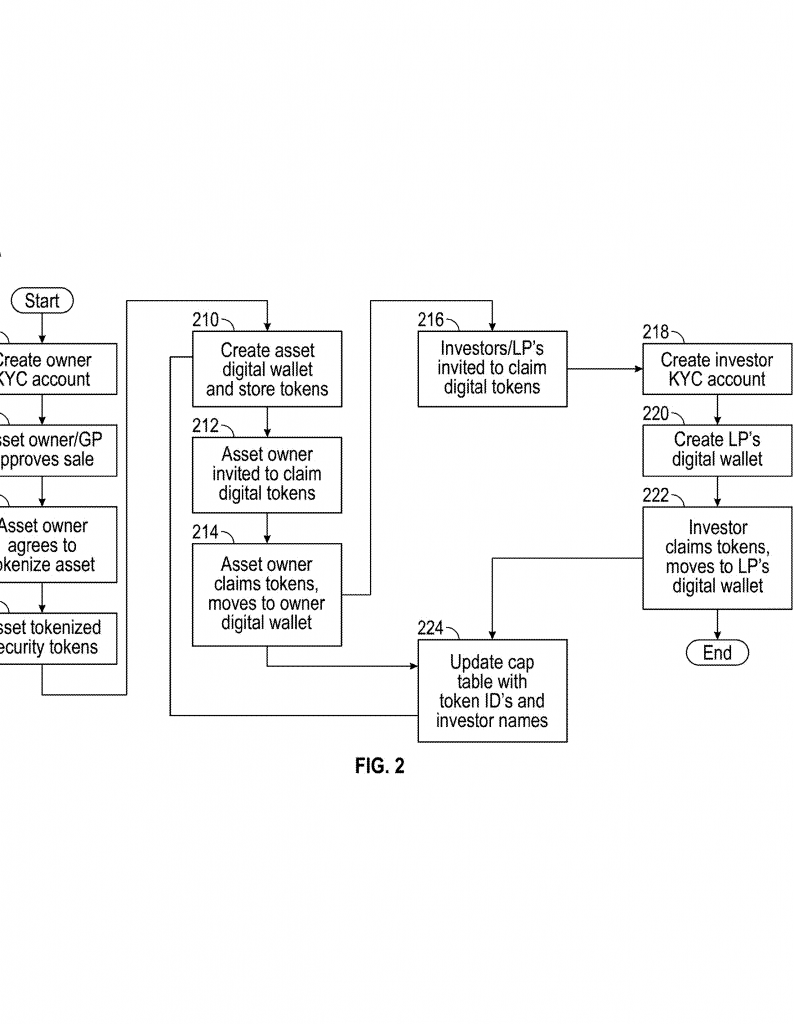
If everything looks good, the system builds a clean, official cap table. This table is formatted in a way that’s easy to use and matches what accountants and lawyers expect.
But the system doesn’t stop there. It keeps learning. As it handles more cap tables for different assets—like buildings, art, or businesses—it gets better at knowing which columns are important for each type of asset. If the system sees, for example, that real estate deals always have a “tax ID” column, it learns to look for that next time.
When someone buys or sells part of an asset (like shares in a building), the system updates the cap table instantly. It also checks if any rules are broken. For example, if there’s a rule that no one can own more than 20%, and someone tries to buy more, the system will stop the trade and send an alert. This keeps everyone safe and helps follow the law.
All the ownership data is stored in two places: a private ledger (for details like names and addresses) and a public blockchain ledger (which hides personal info but gives trust that the records are real and can’t be changed). These two ledgers are kept in sync by the system. This way, owners and buyers know their info is safe, but the trades are still public and can be checked by anyone who needs to.
One of the coolest features is how the system “freezes” shares when a trade is happening. When a buyer starts to buy some shares, the system puts those shares on hold. No one else can buy them until the trade is done or canceled. This stops double-selling and fraud, making trades safe.
The system also keeps a history of every change. If there’s ever a question about who owned what, and when, you can look back and see exactly what happened at every point in time. This is great for audits, taxes, or legal needs.
The machine learning part keeps getting smarter. As more assets and more trades go through the system, it learns what data is important for each kind of asset. If laws or market practices change, the system can notice and update the cap table templates. For example, if new rules require extra info, the system will start looking for that info in the uploaded documents.
This invention is built to work for any kind of asset, not just stocks or real estate. It can be used for tracking shares in a business, pieces of art, parts of a car collection, even tickets to a concert. It makes it easy for owners to invite new investors, for buyers to see what’s for sale, and for everyone to know the records are right.
In short, this system:
— Builds the cap table from any kind of data, automatically.
— Updates the table live, as trades happen.
— Checks for errors and follows rules.
— Keeps records safe, private, and easy to audit.
— Works for any asset, and keeps getting smarter.
It’s a big step forward for anyone who needs to track shared ownership—simply, safely, and with less work.
Conclusion
Ownership is at the heart of business and investment. But tracking ownership shouldn’t be a headache. With more assets being split, shared, and traded by many people, the old ways just don’t work anymore. This new live syncing cap table system changes the game. It takes in messy data, builds clean records, updates them in real time, checks for errors, and keeps everything safe and private.
If you’re a business owner, investor, or anyone who needs to know “who owns what,” this is the tool you’ve been waiting for. It’s simple to use, smart enough to handle any asset, and secure enough to trust. As markets keep growing and more things get traded, systems like this will be key to keeping everything running smoothly.
With this technology, you can focus less on paperwork, and more on growing your investments. The future of ownership tracking is here—and it’s live, smart, and always in sync.
Click here https://ppubs.uspto.gov/pubwebapp/ and search 20250217883.

